Australian Penny date varieties
1913
Two varieties of the 1913 penny were characterized by John Dean. Both were struck with the London obverse and Birmingham reverse and they differ in the orientation of the 3 in the date.
Type 1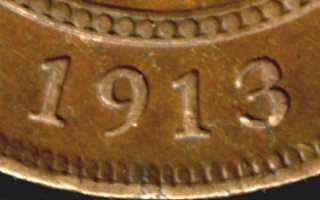
Type 2
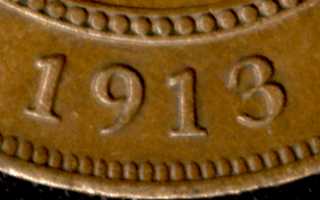
1914
Two varieties of the 1914 penny were characterised by John Dean. Both were struck
with the London obverse and Birmingham reverse and they differ in the orientation
of the 4 in the date. The type with the 4 leaning left is quite scarce.
Note that the 4 in the first example is aligned almost directly with a rim denticle wheres in the second example
the 4 is aligned with a gap. Also, the first 4 is closer to the 1 than the second
4 (1.1mm vs 1.2mm)
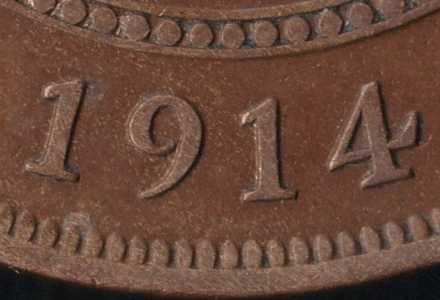
Type 2
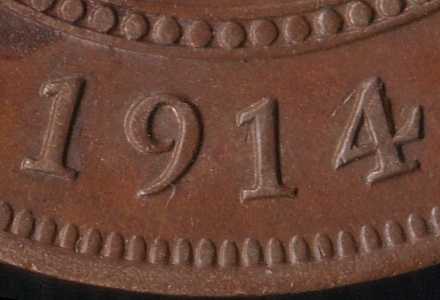
1915
The London coin occurs in two varieties, one with an upright 5 like that on the Heaton coins and one with a 5 leaning noticeably to the left. This latter variety is quite rare.
Type 1
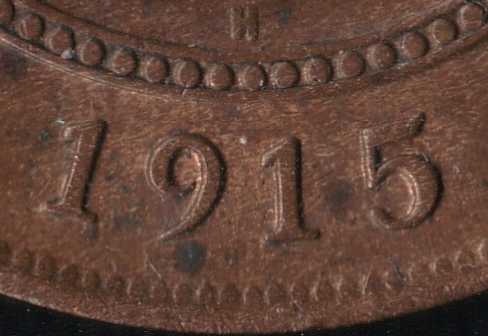
The Heaton mint coin. These all seem to have an upright 5.
Type 2
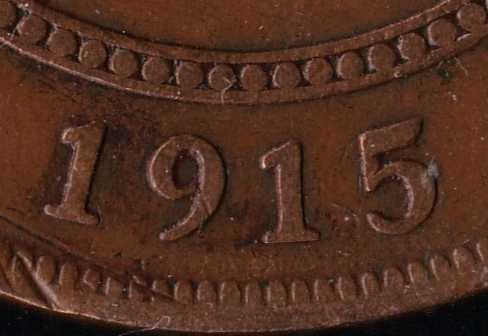
The common London coin. The orientation of the 5 is exactly the same as on the
Heaton coin.
Type 3
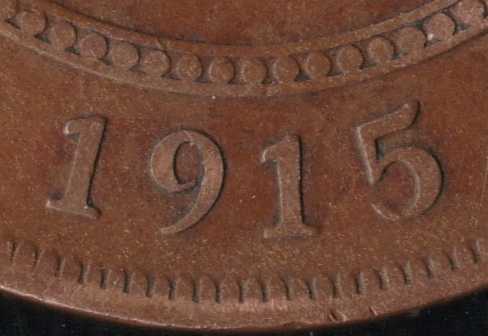
The rare variety where the 5 leans strongly to the left.
1922
John Dean described six varieties of the 1922 penny but ignoring the fishtailing of the dies (what Dean called "curved base" lettering) the number reduces to four.
Type 1
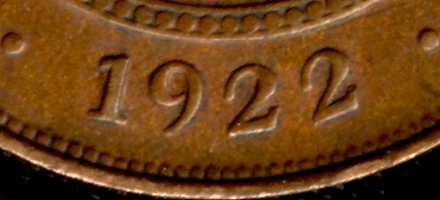
Type 2
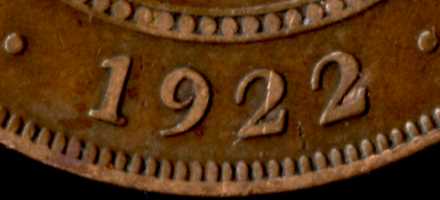
The difference between the first two should be fairly obvious. Look for the orientation
of the 9 and the gap between the 1 and the 9.
Type 3
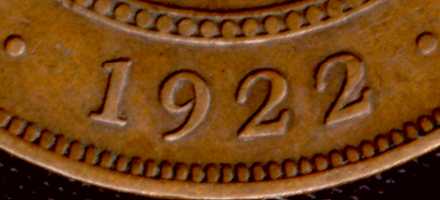
It is much harder to spot the difference between the second and third pictures.
Look at the position of the final 2 with respect to the rim denticles below it.
In the third picture the entire date spans about half a denticle more than in the second picture.
1924
Filled 4 date variety.
The protrusion on the die which punched the hole in the 4 was fairly thin and had a tendency to flatten so that the hole became a shallow depression. As the coins struck with the flattened die circulated, the 4 wore down to the level of the depression and so became a solid block.
The top picture shows a normal 4 with a well-defined hole, probably struck from a fresh die. The second picture shows a shallow-hole 4 partly worn down whereas the bottom picture shows a completely filled 4.
Type 1
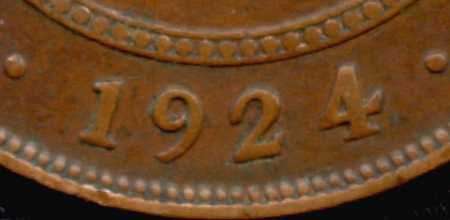
Type 2
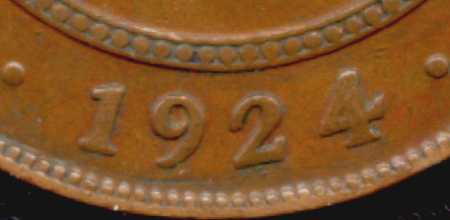
Type 3
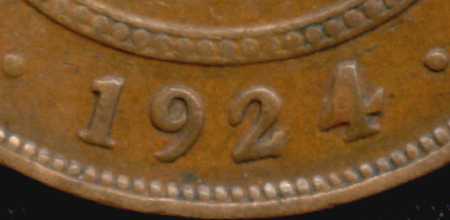
1931
Australian pennies dated 1931 were minted in Melbourne using two obverse and two reverse dies for a total of four combinations. The coins with the London reverse have a "misaligned 1" in the date
Type 1
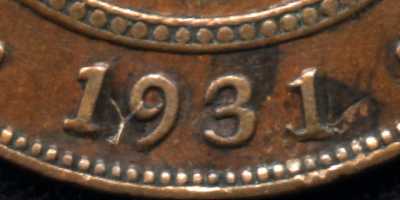
Date on the London reverse showing the final 1 "misaligned".
Type 2

Date on the Birmingham reverse with the final 1 in a "normal" position.
1932
Type 1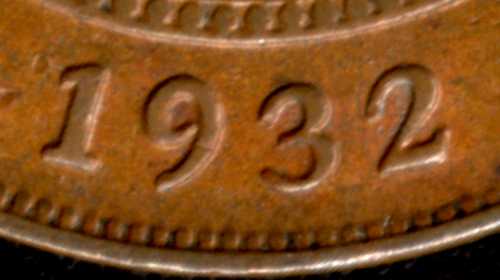
Normal date.
Type 2
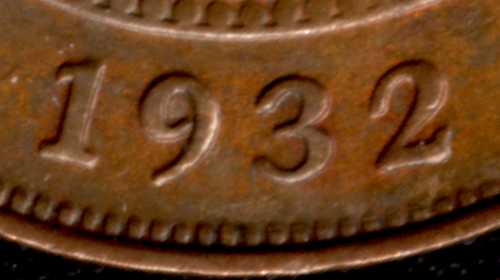
Enlargements of the date
Normal date.3 is high. 3 and 2 slope right.
1933
Type 1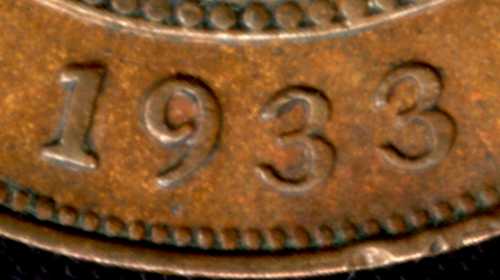
Normal date.
Type 2
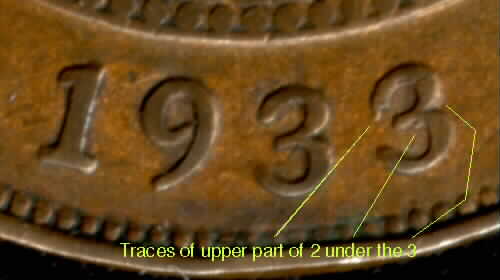
Overdate with pertinent features marked.
Note that specimens where the down stroke of the 2 extends into the lower part of the 3 are fairly rare.3 is high. 3 and 2 slope right.
Other Australian coins varieties
Mintmark variations of the 1942 San Francisco florin
Letter-shape variations of George V pennies

